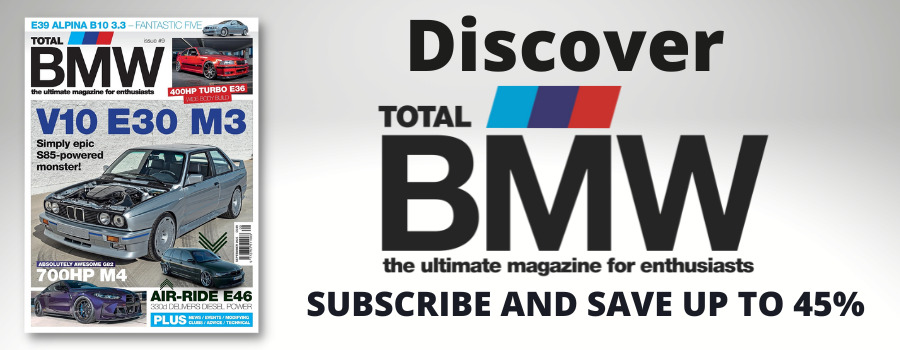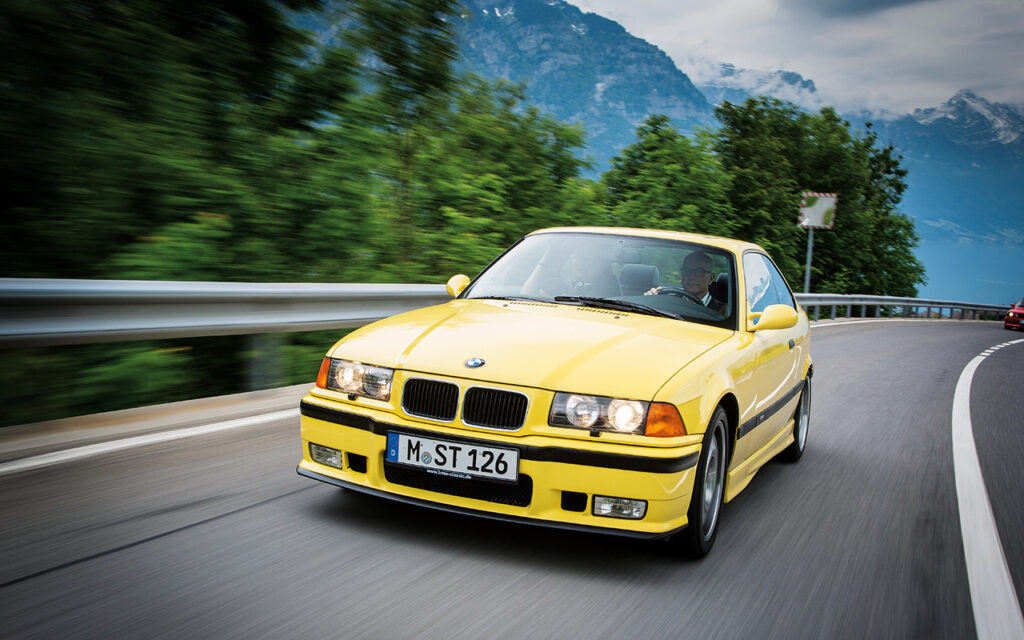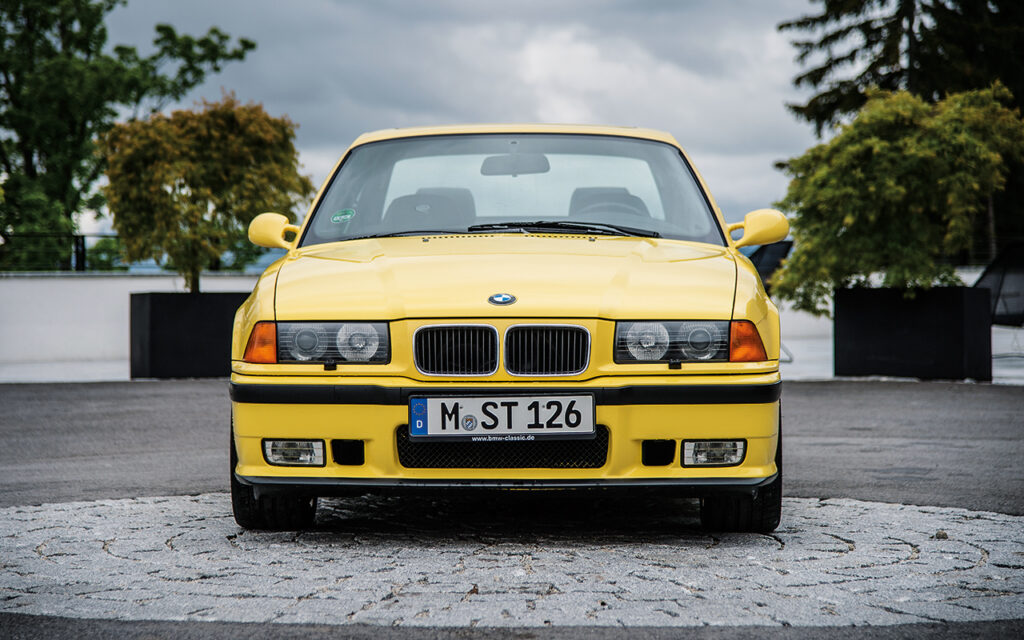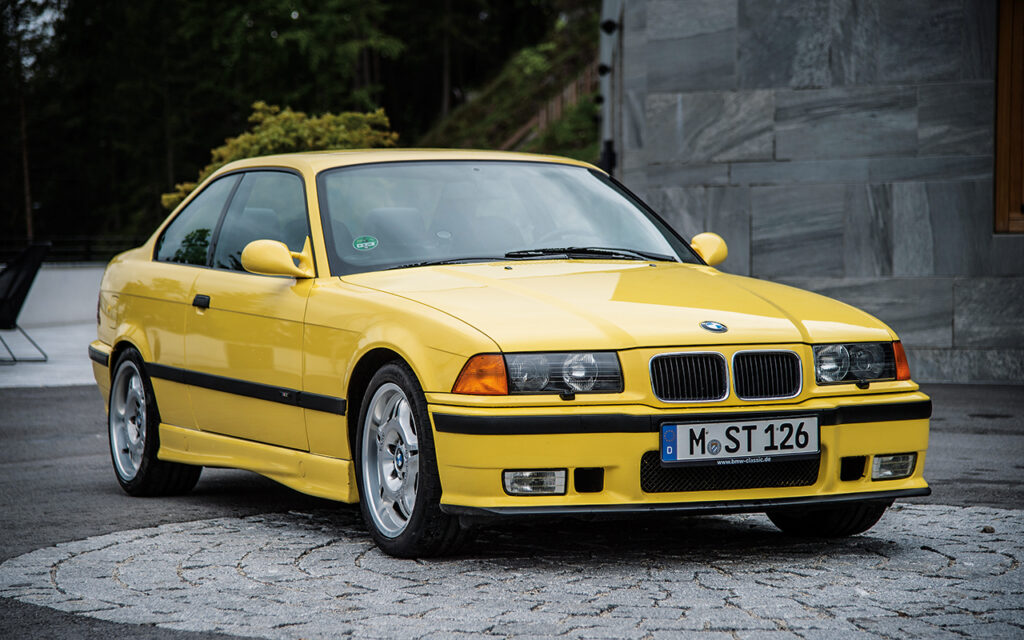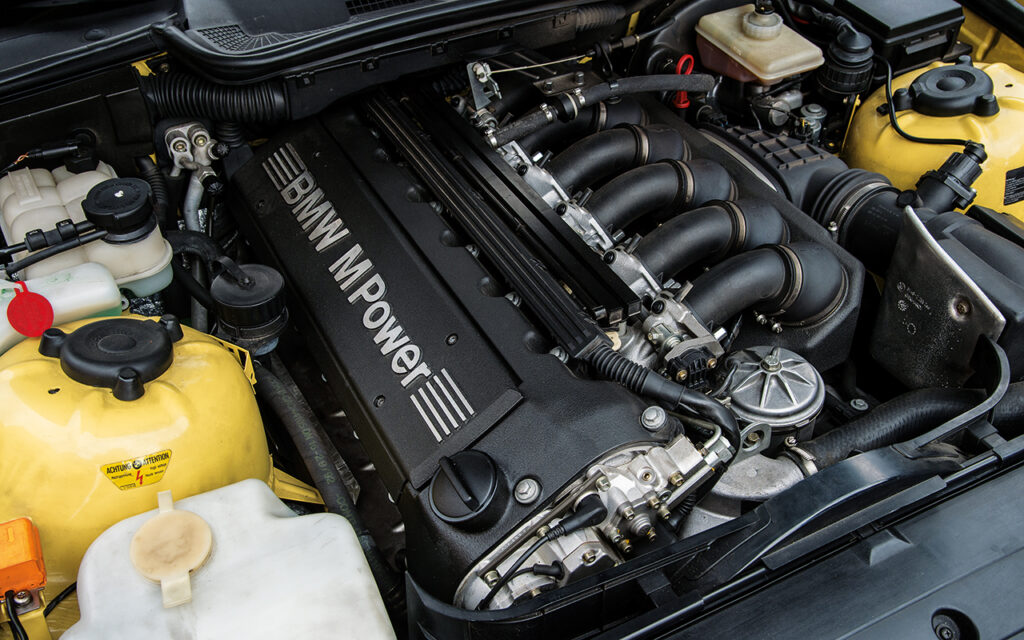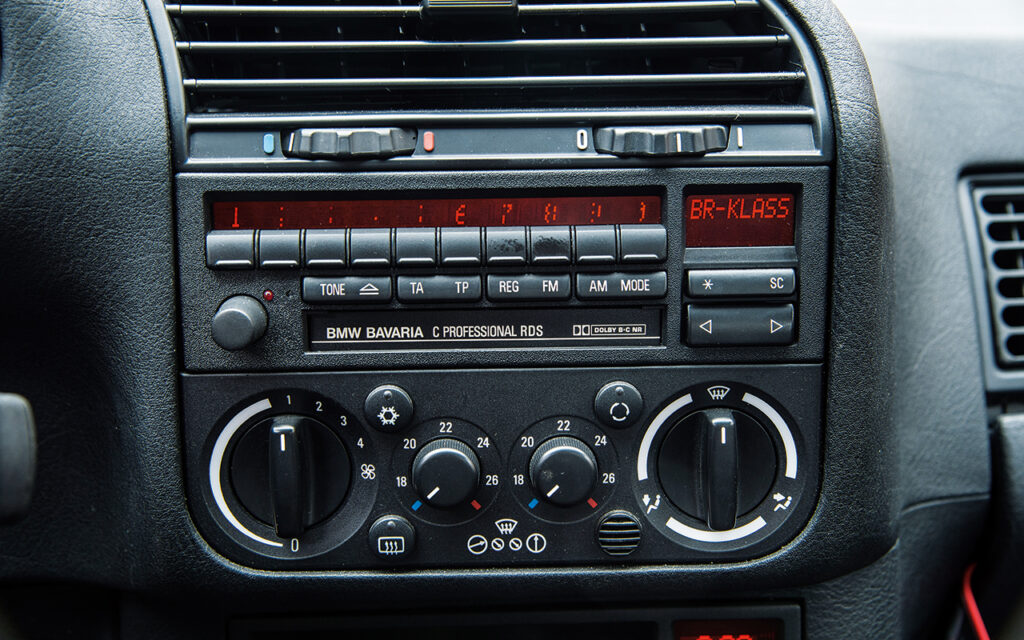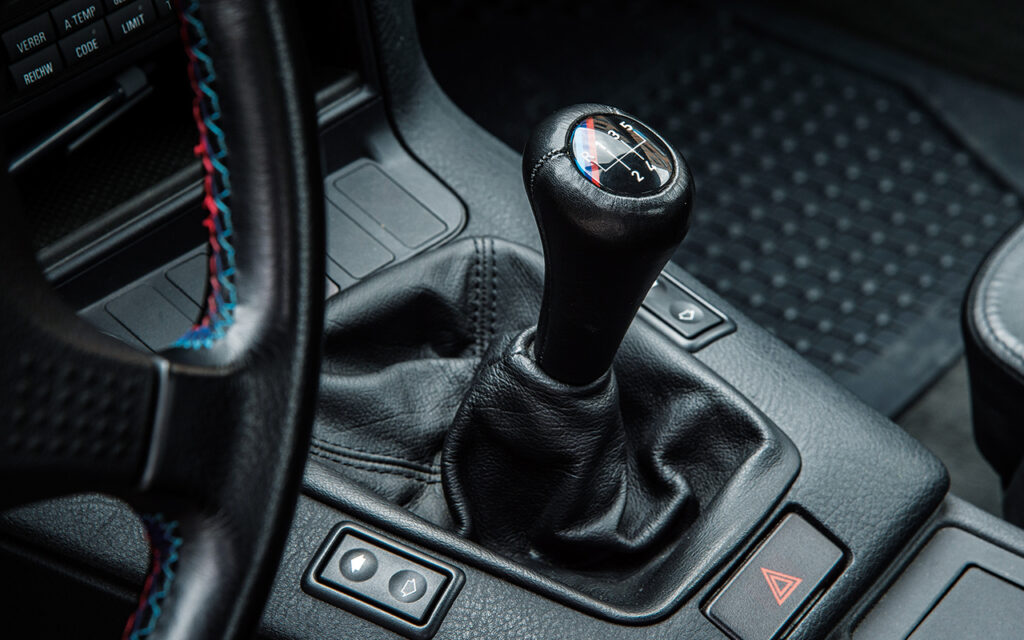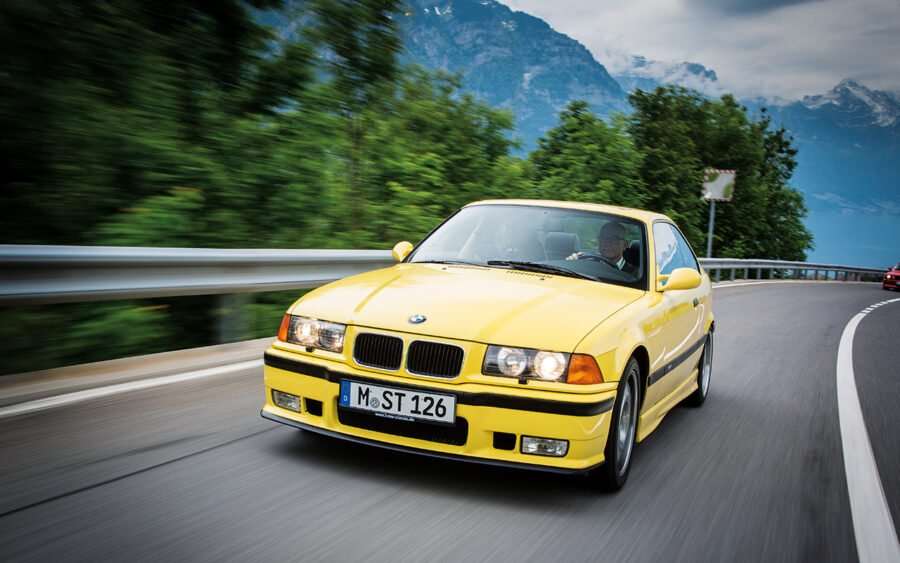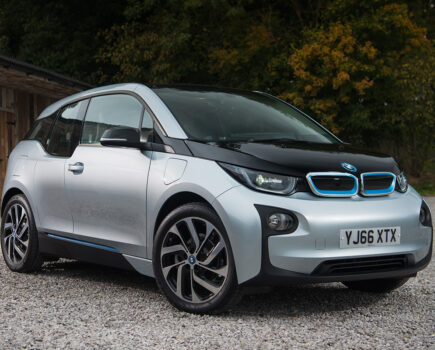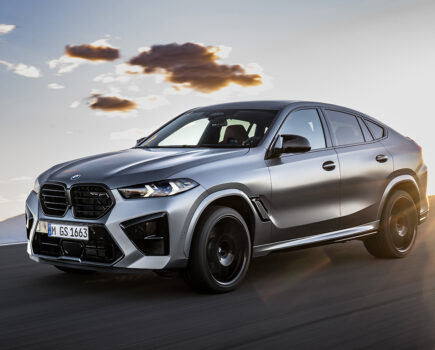Previously underappreciated but now thoroughly prized, the E36 M3 is a great all-round sports saloon (or coupe or convertible) with bags of character. Here’s what to look out for
Words: Ben Barry Images: BMW
The E36’s has endured a journey to appreciated classic status with more twists and turns than a lap of the Nordschleife: a lukewarm press reception followed by a huge sales success, then middle years in the hands of modifiers, racers and some not able to afford proper maintenance, followed by the mass cull a decade or so ago. Parts from M3s were often more valuable than whole cars before a later renaissance finally saw classic values climbing.
Was the initial press criticism warranted? Is the difficult-second-album of M3s finally getting the recognition it always deserved? Well, despite resurgent interest, Norris and other experts we’ve consulted for this feature choose their words carefully when it comes to the E36 M3 – their many positives tempered by a good number of reality checks.
The E36 M3 was never going to have an easy ride. It followed the first-generation E30 M3, which was bred for racing, with all the purity of purpose but compromise that entails. The E36 had a far broader remit, with a stronger focus on luxury and refinement as well as increased performance, and an eye on selling tens of thousands – not just 5000 units for Group A homologation, as was the case with the E30. Most significantly in terms of engineering, the E36 introduced the S50 B30 3.0-litre six-cylinder engine, the multi-link Z rear axle and, later, a saloon variant (the E30 was already offered as a convertible), but it was also a significantly larger and heavier vehicle (88mm longer at 4433mm, around 200kg porkier at 1460kg). Really, this was M5 logic downsized to the 3 Series, but much as the concept was familiar, the E36 represented wholesale reinvention for M3-kind.
The E36 had a plusher ride than an E30, a less direct feel generally, particularly in its rather sloppy steering, and my coupé was greatly improved by uprated suspension and brakes – it was more precise, with a less snappy transition to oversteer, if obviously with a trade-off in comfort; it narrowed the gap to an E46, the successor that effectively distilled more of the E30 magic back into an E36-derived recipe.
But really it was all about that six-cylinder engine – at 282hp it produced substantially more performance than the E30 (which stretched from 192-235hp), and was super-smooth and responsive, loved to rev all the way to 7250rpm and made a glorious metallic rasp as it hit the high notes. Despite its strengths, though, the E36 has never quite managed to shed its reputation as a runt of the litter.
“The E36 sits between two utterly iconic M cars; that’s what affects values but it also makes it quite interesting because you can really see the path M Division was taking at that time,” explains Norris. “On the one hand you’ve got the E30 – one of the most iconic homologation specials of all time – and on the other hand the E46, one of the most polished performance cars ever produced, and one that still feels fabulous today. But I’m starting to get more whispers – guys in their 40s who’ll want a really, really good E36.”
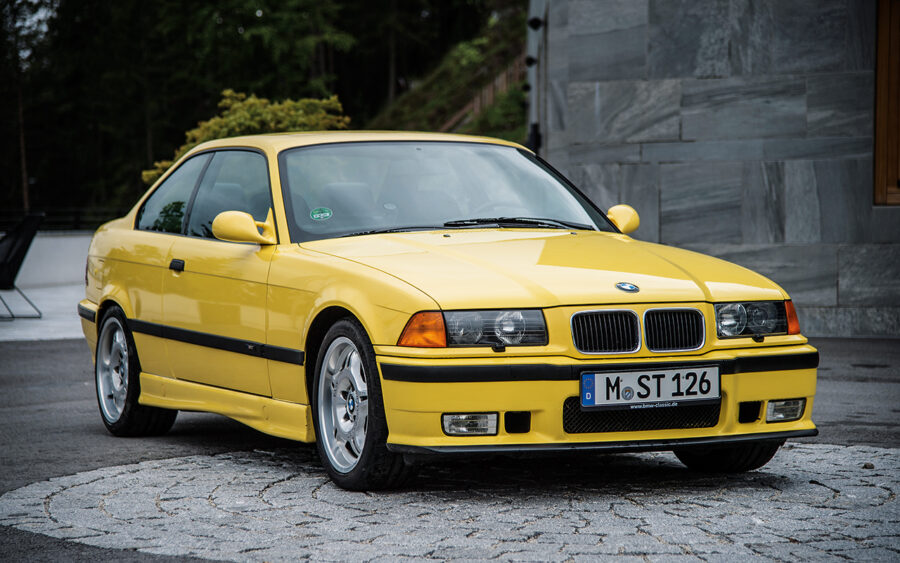
BMW M3 (E36) range
A total of 71,242 E36 M3s were produced worldwide, but numbers have thinned over the last decade. There isn’t an E46 CSL or E30 Sport Evo version of the E36 available (the US Lightweight didn’t get the same engine and the 15-unit M3R, developed in Australia, is incredibly rare) but the special-edition GT models come closest and are particularly sought after.
The original GT was a homologation special offered in the 3.0-litre generation with some desirable enhancements that pre-dated the Evolution upgrade introduced for 1995. It was distinguished by its green paint, deeper front- and taller rear spoiler, polished five-spoke alloys, and combination of anthracite Alcantara and Mexico green leather. Crucially, left-hand drive cars get an uprated 3.0-litre engine, using revised cams and engine management to yield 295hp. 356 were produced, but while the 50 right-hand drive cars might seem more tempting, they didn’t get the special engine. It’s why you might pay as much as six figures today for a left-hooker. Right-hand drive models are more affordable, though the £20k currently asked for a 200k mile car with £9k engine rebuild is right at the lower end of the spectrum.
There was a second version launched in 1998, unofficially dubbed GT2, based on the Evolution spec and finished in Imola Red, but otherwise with a similar exterior and interior treatment to the GT, if no mechanical upgrades. They too have a strong following.
GTs are the Holy Grail of E36 M3s, and the generally higher values throughout their lives means they’ve typically enjoyed better maintenance. For most buyers, however, the choice will be between a coupé or saloon (the latter introduced in 1994), and of the 3.0-litre or later 3.2-litre Evolution.
3.0-litre cars produced 282hp with 236lb ft, and had single VANOS variable-valve timing (on the intake side), plus a five-speed gearbox. The most obvious tell-tale is orange indicators, and kidney grilles that are recessed, not flared out (many were upgraded to aftermarket clear indicators, and very early Evos got the carry-over recessed kidneys from the factory).
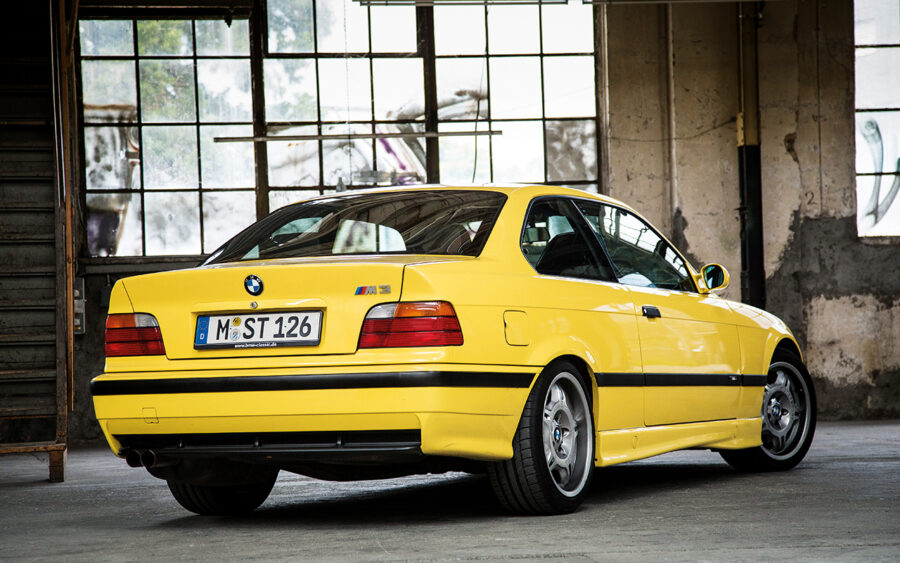
The 3.2-litre Evolution upgrade introduced in 1995 was a riposte to rivals like the Toyota Supra and to accusations that there wasn’t enough fresh air between the 328i and 3.0-litre M3. The revised S50 B32 engine added double VANOS, the capacity increase and an improved sump and double oil pick-up, with performance increasing to 316hp and 258lb ft. There was also a six-speed gearbox and M5 differential, plus tweaked alloy wheels, although outside and in this is anorak-spec spot the difference.
We lean towards the 3.0-litre, mostly because we find the engine smoother and gear shift slicker. Norris reports a particularly strong following for them as track cars, especially when he first arrived in 2009. But he also thinks the M3 Evo saloon is more collectible, due to lower numbers and improved Evo performance (just 694 right-hand drive were produced). Just remember a saloon gets more conventional seats (just like the convertible), not the highly distinctive ‘Vaders’ of the coupé.
Norris also recommends avoiding the convertibles altogether, with a convertible with an SMG 1 semi-automatic gearbox being bottom of the pile (he’s of the opinion that the convertible helped spoil the E36’s image, and recounts a tale that pre-dates his Munich Legends ownership, where a customer bought an SMG convertible on looks alone, and got so far as East Grinstead before turning round to hand back the keys… he vows Munich Legends will never offer one again).
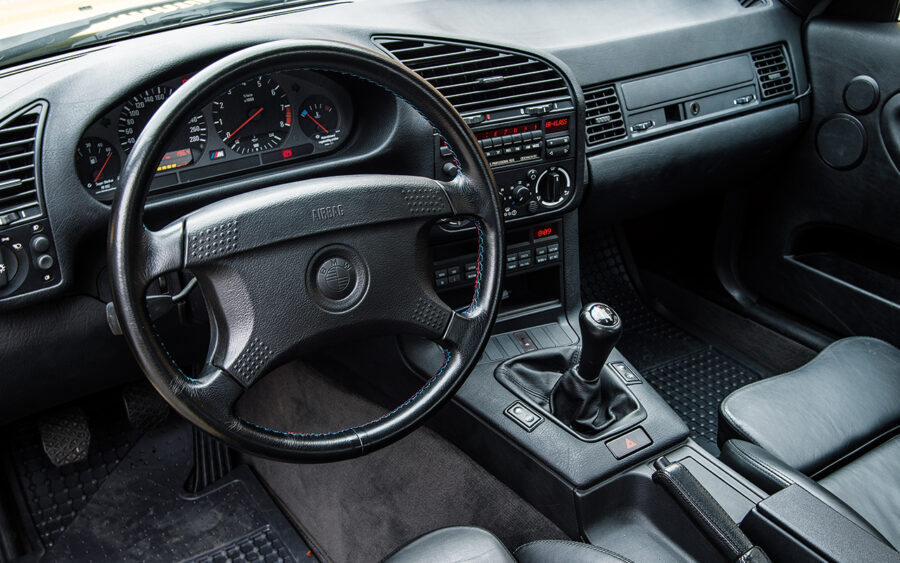
Bodywork
So how are E36s bearing up now the youngest are 23-years old? Munich Legends’ general manager Stuart Draper joined the business around the time the E36 left production, and has maintained and driven countless E36 M3s since.
Corrosion, he says, is the main concern. “They were never bad back in the day, even ten years ago, but today you really need to look at how structurally good they are – we see cars with so much rust they’d fold up in an accident, and you can easily spend 10-15k rebuilding them.”
Lack of use is now becoming more of an issue, with some cars tucked away and covering very few miles.
Engine and transmission
Draper praises the E36’s robust mechanicals, highlighting generally strong engines that he now sees with 250k miles, and suggests many upgraded engine parts and ancillaries (“timing chains, uprated oil pump kits, uprated cam carriers and bearings…”) are simply not necessary for road use. The famed VANOS variable-valve timing issues can be cured with a full rebuild for £1500 plus VAT.
Draper prefers the 3.2-litre engine for its extra flexibility, but comments that the 3.0-litre is a very strong track car with its single VANOS, and recommends the twin pick-up sump fitted to the Evo and the M3 GT (feted as the best of the 3.0-litre and 3.2 in one package) to guard against oil starvation.
Gearboxes and diffs are typically very robust, and while he unflinchingly describes SMG 1 as ‘terrible’ to drive, concedes it’s reliable and easy to maintain. “We get calls all the time to convert to a manual gearbox, but it’s still a £3-4k conversion,” he explains.

Steering, suspension and brakes
E36 steering always had an element of free play, but the handling will feel terrible if wishbone bushes, lower steering couplings and steering trackrods have play. “That exaggerates the take-up you feel in the steering, and they lead and tramline all over the road,” Draper explains. “They don’t have to be completely worn out – if all the balljoints are 50 percent worn it makes the whole car feel vague, they rear-wheel steer and become unstable.”
Draper couches his words when it comes to track cars, owing to the harder lives they live, but E36s are famously good on circuit, as any /touristenfahrten/ video at the ’Ring attests. Thorney Motorsport has specialised in M3s for a couple of decades, forging its name on the racetrack.
“As standard I find the E36 a little less robust compared with the E46, flimsy almost, although their handling is very tactile and less wooden than the E46,” says boss John Thorney. “In terms of track preparation and particularly racing, the E46 is a better, stiffer chassis, but it’s heavier, so it costs more to remove weight – so the E36 is an easier car to make faster as it’s starting from a lighter point.”
Thorney says many customers prefer the E36 as it’s lighter and easier to handle on the limit versus an E46 (he favours the later car’s stiffer chassis), and suggests anyone looking for a track car on a budget “sort the brakes and suspension, get the weight out, forget going for more power, and run lighter wheels with square set-up tyres”.

Overall, though, the tide is turning against the E36 when it comes to track use. “There’s more interest in the E46 compared with the E36 over the last five-years – the E36 is still there but more for the diehards who will always prefer it. In the racing we do we have four or five E46 M3s and one or two E36s, and that’s pretty much swapped from 10-years ago.”
Cost and the E36’s age is part of the reason. “Go back 10-years and the E36 was 60 percent cheaper than an E46 to get to a winning standard as chassis work to remove weight from an E46 is expensive, but now the opposite is true – the E36 is still a great chassis but the engines are getting tired and expensive to make decent power when compared to the S54, which is relatively plentiful still and robust if looked after.”
BMW M3 (E36): our verdict
As is so often the case with older, previously underappreciated classics, those who missed the boat when the E36 M3 was cheap are advised to hope on the wagon now. Good examples will surely climb in value, all the while providing the consummate performance BMW experience.
Dan Norris adds that he never gets customers who used to own an E36 when new and wish they’d never sold in the same way he does for an E46, but thinks 10- or 15-years from now will be the acid test on how far values can climb. “That’s really when monied collectors will remember something from their childhood – maybe a relative’s E36 they’d ride about in – and they’ll get on a nostalgia trip and I think it’s still too early for that. The E36 remains a left-field car in the context of all BMW M cars, but there’ll always be those excellent examples that someone will want to pay a lot for.”
Maybe come the 40th anniversary we’ll all be kicking ourselves about not picking up that mint E36 we saw for £30k back in 2022?
